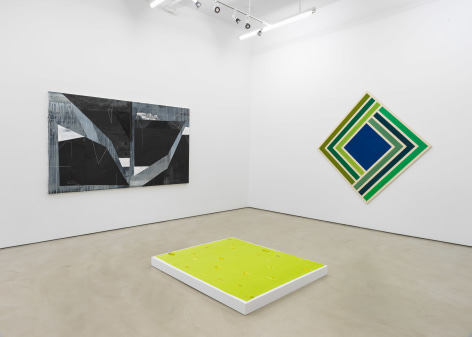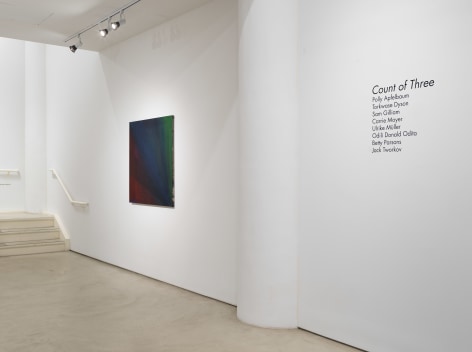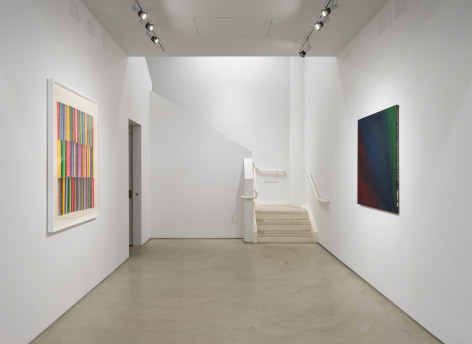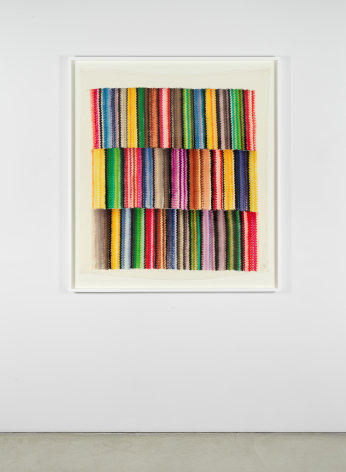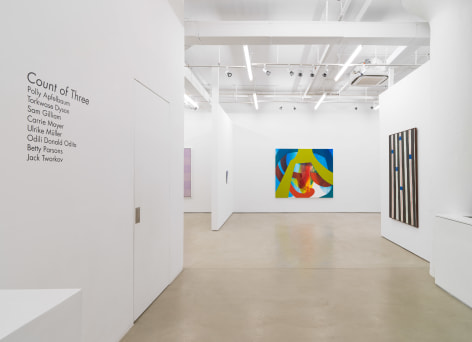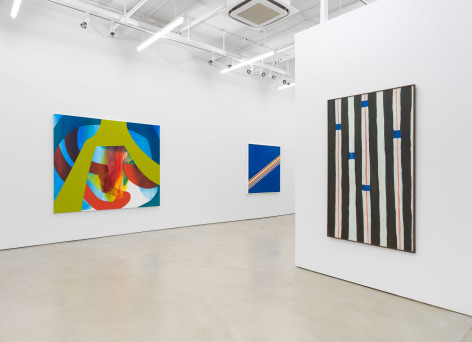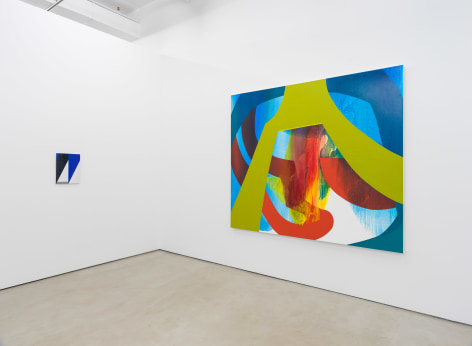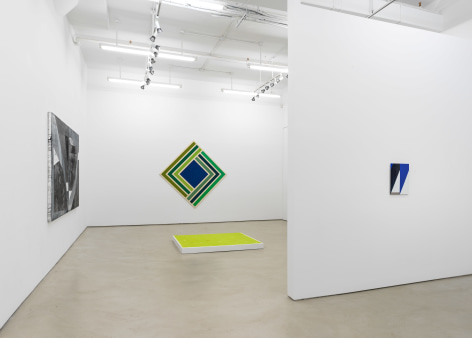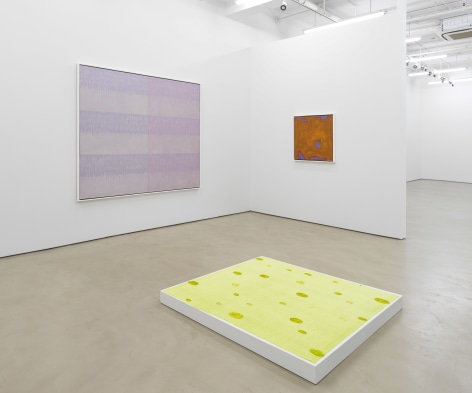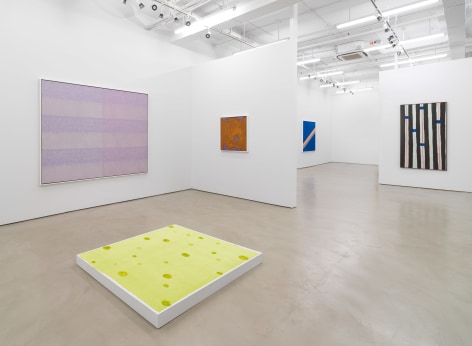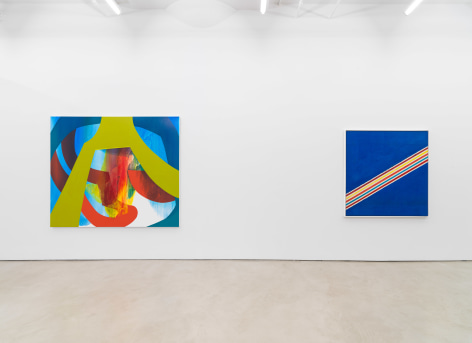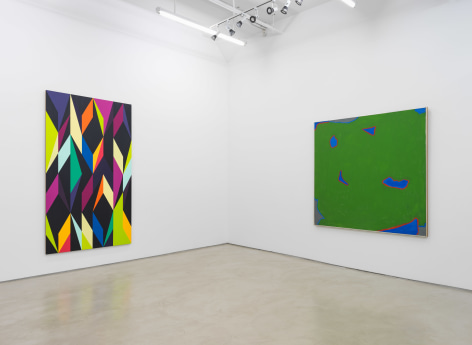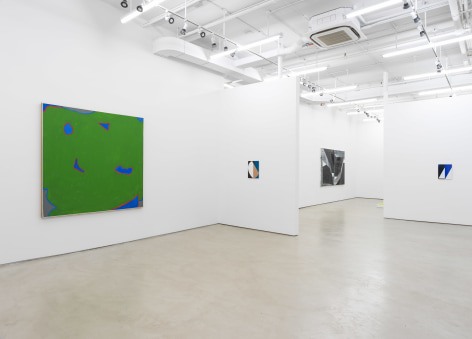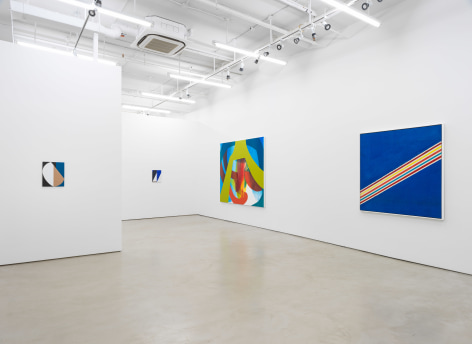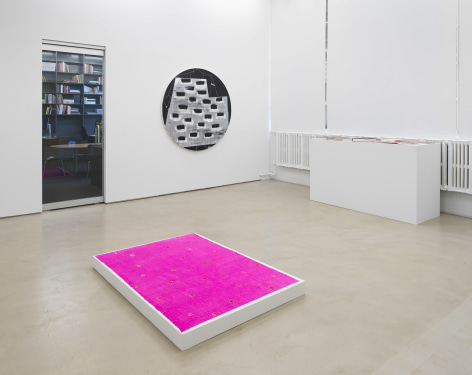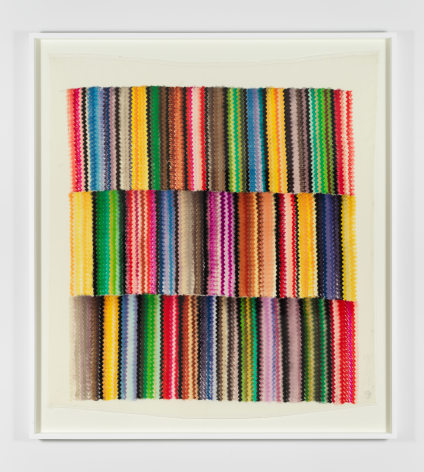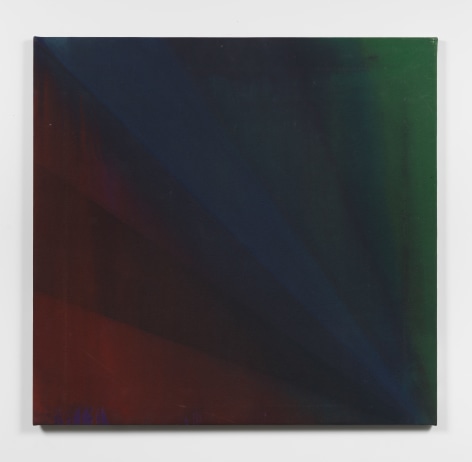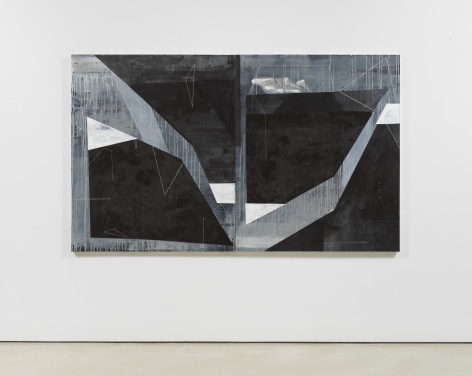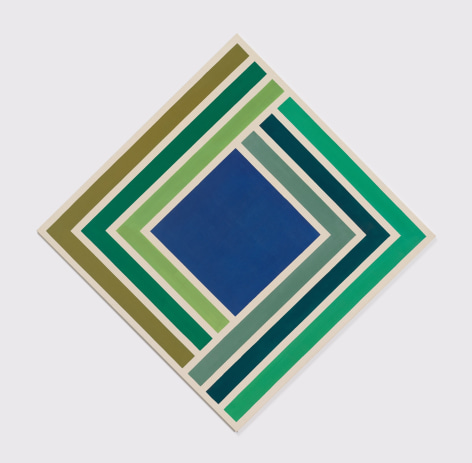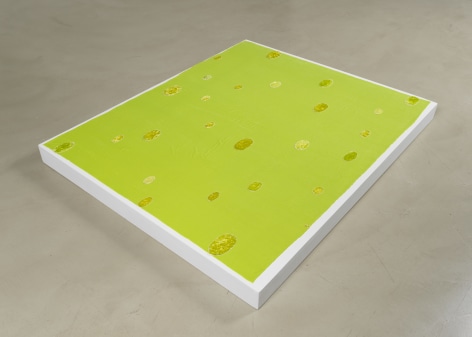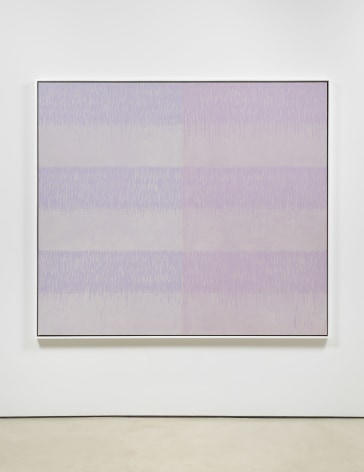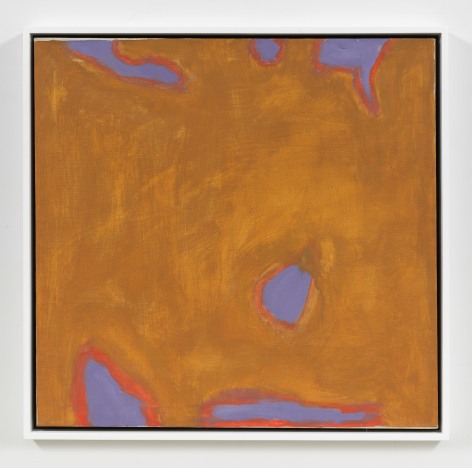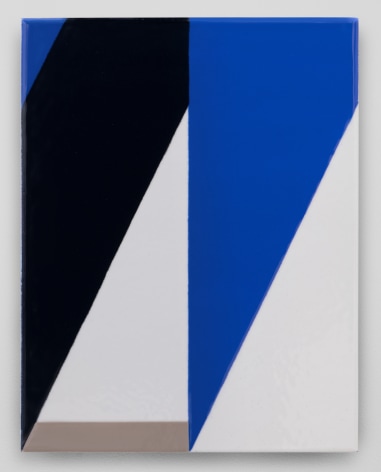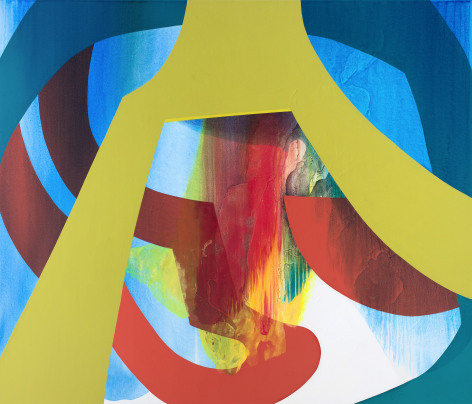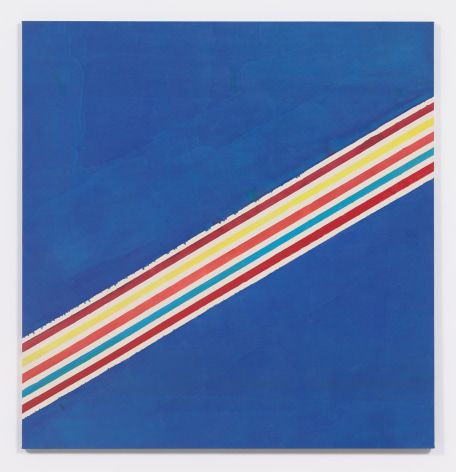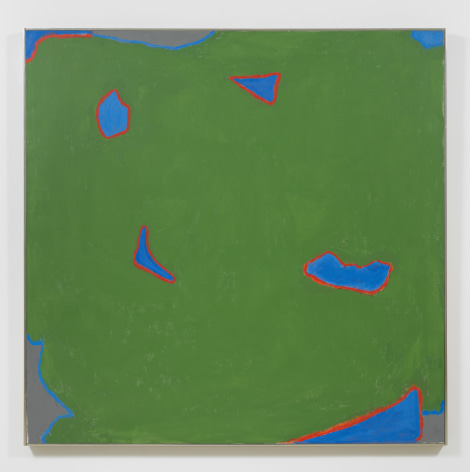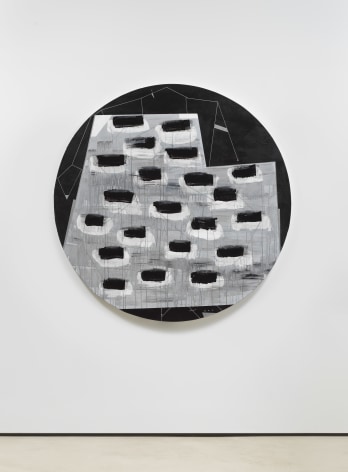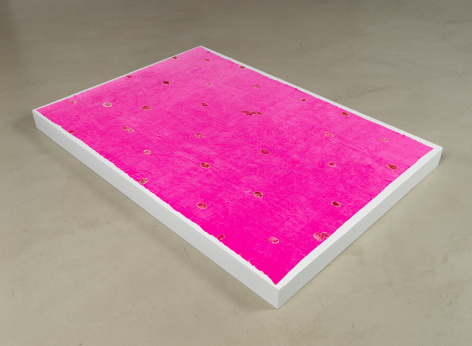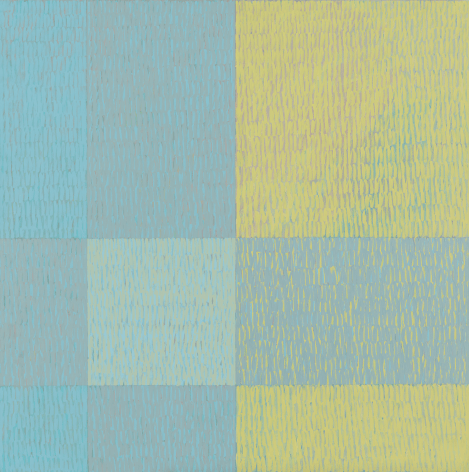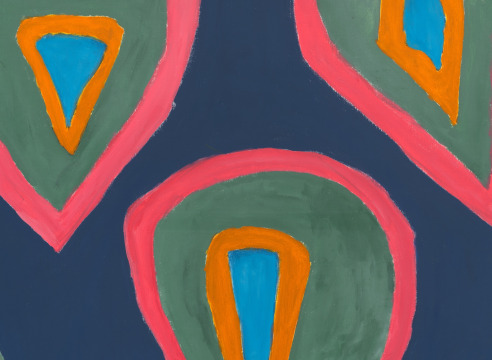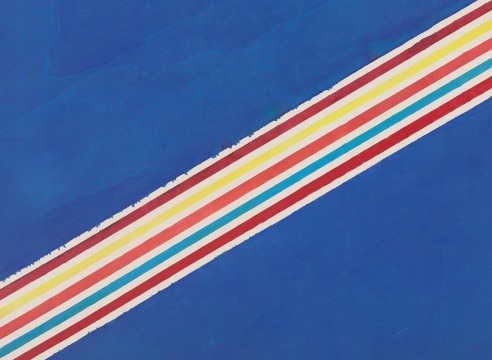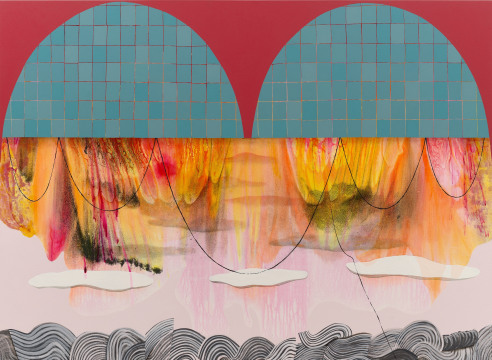
Alexander Gray Associates presented Count of Three, a survey of abstract painting from the 1960s to the present that takes structure—both formal and metaphysical—as a position to work within and against, opening onto myriad generative possibilities. Bringing together artists situated in an array of art historical, social, and cultural contexts, the exhibition features works by Polly Apfelbaum, Torkwase Dyson, Sam Gilliam, Carrie Moyer, Ulrike Müller, Odili Donald Odita, Betty Parsons, and Jack Tworkov.
Taking its title from Betty Parsons’ 1967 painting, Count of Three centers on the medium of painting, broadly defined. The exhibiting artists work in a range of formal approaches to abstraction, including geometric, biomorphic, and gestural, and frequently employ an intrepid use of color. The structures they work from may be adopted, invented, or inherited, and disrupting them might bend to challenges art historical, ideological, or political in nature. The artworks on view play between rules and spontaneity, order and expression, and the potential that emerges therefrom.
Throughout the 1960s, Parsons’ painting employed geometric and biomorphic elements with bold combinations of color, in works such as Autumn (1965), in an approach that privileged intuitive combinations over stylistic allegiance. Later that decade and into the 1970s, geometric formulas and mathematical precision brought a cerebral quality to Jack Tworkov’s late works, as in Jag (SP-69-#4) (1968), which anchored a loose system of mark-making within diagrammatic structure. In the context of color field painting, at first glance, Sam Gilliam’s geometric paintings of the mid-1960s read as hard-edge abstraction, in step with his peers in the Washington Color School. However, his unprimed canvases exposed a fluidity of line and color, particularly through the bleeding of pigment between lines and solid grounds of color, as seen in Raw Meat (1965).
In recent decades these innovations at mid-century have themselves become the subject of structural interrogation. Polly Apfelbaum’s work celebrates the history of painting at the same time that it playfully probes it, particularly through planar relationships to the walls and floors of exhibition spaces. Still Life: Pink on Pink (1997), sited on the floor, deploys richly-dyed velvet as a lively counter to color field painting, eschewing brushstroke for saturation.
Carrie Moyer’s paintings also bear close stylistic relation to mid-century painting, and in works like Conflagration with Bangs (2015), a complex compositional structure becomes the point of departure for her versatile application of paint. Moyer celebrates the material qualities of acrylic with drips, washes, and layers in a palette of vivid primary colors.
Bringing an expanded lens to matters of structure, additional recent works in the exhibition challenge formal precedents while also examining political and cultural systems. Ulrike Müller replaces traditional paint and canvas with vitreous enamel and metal in intimately-scaled works like Curls (2017). With an unexpected material transformation, she questions silos of categorization: painting or sculpture, crafted or decorated, physical or emotional. Torkwase Dyson’s gray-scale paintings such as Damn-Dam, Levy-Levees (Water Table) (2019), combine geometric precision with a gestural handling of paint. Drawing on her research-driven practice, which focuses on the impact of industrial labor and architecture on the black body, Dyson unwraps and flattens built environments, erects and dissolves horizon lines, and stretches and distorts perspective, in effect pulling beauty out of dystopia. In his polychromatic painting, Echo (2019), Odili Donald Odita examines questions of race and social relations, through a formal language of rhythmically convulsive and irregular geometry that conjures the visual languages of graphic design, national flags, commercial signage, and repeating textiles.
Together, the works in Count of Three manifest the innovative potential in challenging structures from the inside out. Taking up the histories of styles, forms, materials, and/or subject matter, they approach art historical inheritances as fertile ground for experimentation and as means toward forging new ground.

